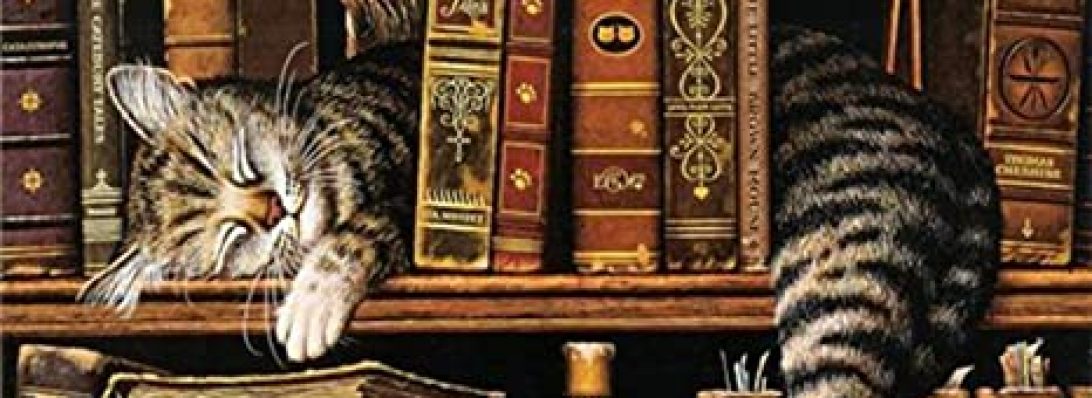Special Topics in Calamity Physics is one of those novels that asks you to think, to go back over the Introduction once you’ve finished, to look for new clues and new meanings in chapter headings and lines of dialogue.
It’s the sort of novel that immerses the reader in a world of eccentric academics, esoteric reading material, and Big Ideas.
It’s the kind of novel that features a narrator with such a strong voice that your speech patterns and writing style are influenced for days after you finish it.
The story is a simple one: Blue Van Meer lives with her father, a brilliant professor. They move from town to town as her dad switches teaching jobs. Finally they land in North Carolina, and Blue begins her senior year of high school at the elite St. Gallway School. Soon enough, the brilliant but lonely Blue falls in with a group of students called the Blue Bloods, who meet every weekend at the home of Hannah Schneider, one of their teachers. For a while it’s all very Dead Poets Society…until two deaths occur and Blue finds herself having to unravel a very complicated mystery.
I find myself at a bit of a loss to describe this novel. It’s part coming of age, part high school drama novel, part experimental, part satire, part mystery. A fun and heady mix, to be sure, filled with allusion and playful prose.
There’s some fun playing with form, as well–Blue, influenced by her brilliant father, offers sketched “visual aids” and many parenthetical citations to aid in her storytelling. There’s even a Final Exam at the end that serves as an epilogue. We’re pretty much on our own to fill in the blanks of the story and figure things out.
I will say that at some points the narrative really drags. This is not a novel with a clear story arc, suspense, or any real resolution. This is, instead, a novel that explores the character and influences of Blue Van Meer. Luckily for us she’s a fun character to read, and there are truly some great one-liners and turns of phrase.
Lastly, I’ll say that I love the father-daughter relationship that makes up the true emotional core of this story. The sweet moments between Gareth and Blue really are lovely, and make a great counterpoint to the deadpan intellectualism and shallow relationships of the rest of the characters.
Readalikes:
I was immediately reminded of Donna Tartt’s The Secret History as soon as I read the description of this book. If you enjoy the set-up of Calamity Physics, then it might be worth a look. The Secret History also features an elite group of students involved in mysterious deaths, and is also a mix of satire and mystery with plenty of literary allusion thrown in. Think a slightly Gothic Dead Poets Society.
I also thought of Rebecca Makai’s The Borrower as I was reading. Blue reminded me a bit of the ever so slightly revolutionary librarian narrator of that novel. It’s another story of slightly eccentric characters in a weird situation (in this instance a pseudo-kidnapping and road-trip), with a touching relationship at its center–but this time it’s between a young boy and the librarian. (Here’s a link to my review of The Borrower)
If you enjoy the overall tone, bookish references, and the clever playing with format, you might try Book: A Novel by Robert Grudin. It’s a satiric look at college life and publishing, particularly about professors and career academics, with a murder mystery thrown in just for fun. Oh, and at one point there is an entirely separate story playing out in the footnotes. It’s a fun, quirky read with a unique style and many, many allusions.
Mark Dunn’s Ella Minnow Pea: A Novel in Letters (also subtitled as A Progressively Lipogrammatic Epistolary Fable, which gives you a good idea of the playing with form aspect of the novel) is a lot of fun for those who like wordplay and satire, as well coming of age stories wherein young people must solve problems and fight for expression.
–Marie
This post originally appeared on the blog on January 28, 2012



 In 1969, local golden boy Chase Andrews is found dead in the marsh outside Barkley Cove, North Carolina. Immediately the locals suspect Kya Clark, who is known as the “Marsh Girl.” As the investigation into Chase’s death occurs in the present, the narrative also explores Kya’s childhood and the experiences that led to her solitary life in the marsh.
In 1969, local golden boy Chase Andrews is found dead in the marsh outside Barkley Cove, North Carolina. Immediately the locals suspect Kya Clark, who is known as the “Marsh Girl.” As the investigation into Chase’s death occurs in the present, the narrative also explores Kya’s childhood and the experiences that led to her solitary life in the marsh. Our unnamed narrator and his beautiful wife, Millicent, have found a great way to spice up their 15-year marriage: they murder young women and then devise ways to get away with it.
Our unnamed narrator and his beautiful wife, Millicent, have found a great way to spice up their 15-year marriage: they murder young women and then devise ways to get away with it.

 Jennifer McMahon’s latest, Burntown
Jennifer McMahon’s latest, Burntown